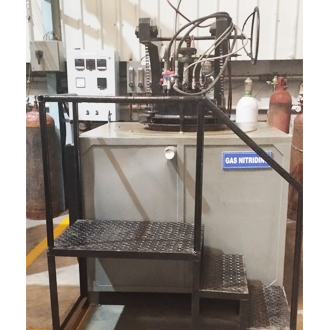Gas nitriding is a thermochemical case hardening process used to increase wear resistance, surface hardness and fatigue life by dissolution of nitrogen and hard nitride precipitations.
Benefits of gas nitriding
Favoured for components that are subjected to heavy loading, nitriding imparts a high surface hardness which promotes high resistance to wear, scuffing, galling and seizure. Fatigue strength is increased mainly by the development of surface compressive stresses. The wide range of possible temperatures and case depths, which allow adjustment of different properties of the treated parts, give gas nitriding a broad field of applications.
Application & materials
Typical applications include gears, crankshafts, camshafts, cam followers, valve parts, springs, extrusion screws, die-cast tooling shot sleeves , sprue bushes , core pins and punches etc, forging dies, aluminium-extrusion dies, injectors and plastic-moulds.
Nitriding is most effective when applied to the range of steels containing nitride-forming elements such as chromium, molybdenum, vanadium and aluminium. The process is also applicable to tool steels such as hot-work, cold-work and mould steels. A low temperature application is nitriding of spring steels to prolong the fatigue life of springs for automotive use. In general, all ferrous materials can be gas nitrided up to 5% chromium. For optimum results, the material should be in a hardened and tempered condition prior to gas nitriding.
